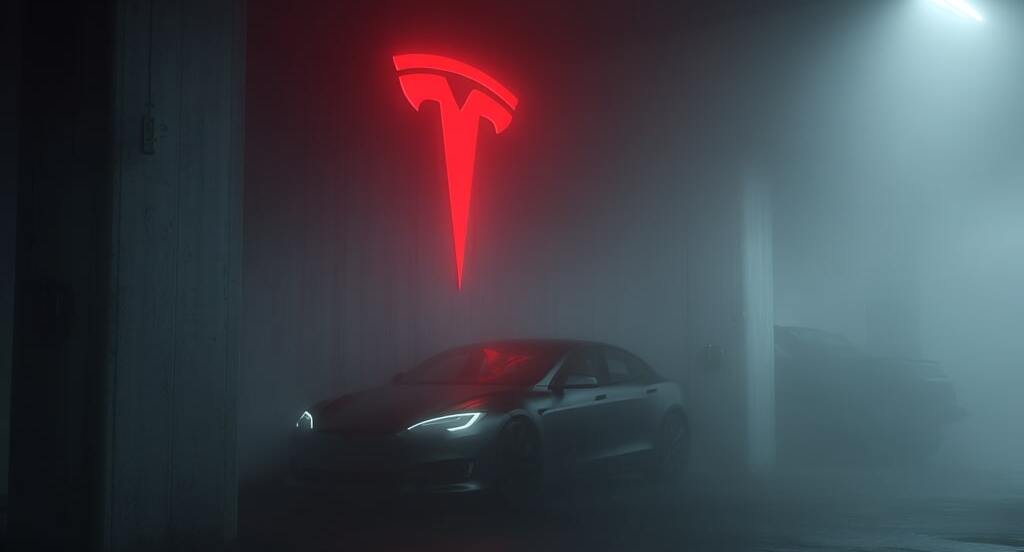
Tesla Stock Analysis: TSLA Trades at $245 With Margin and Policy Pressures
At $245, TSLA faces weakening deliveries, thinner margins, and policy risk as insider selling clouds investor optimism | That's TradingNEWS
Tesla Stock Analysis: NASDAQ:TSLA Faces Margin Pressure, Policy Uncertainty, and Market Optimism Defying Fundamentals
NASDAQ:TSLA Q2 Earnings Reveal Margin Compression and Credit Dependence
Tesla (NASDAQ:TSLA) entered the second half of 2025 under extreme scrutiny as its Q2 earnings laid bare the company’s dependence on regulatory credits and its thinning automotive margins. Revenue from carbon credits exceeded $400 million in Q2, keeping profitability afloat. Without these credits, Tesla’s net income would have slipped into negative territory. The looming “One Big Beautiful Bill,” which Elon Musk has sharply criticized as “utterly insane and destructive,” threatens to unwind Biden-era EV tax credits and weaken EPA emission standards. If passed, Tesla risks losing the regulatory tailwind that has supported its bottom line for years. This policy shift could leave Tesla exposed, as competitors like BYD already outperform on margins without relying on credits.
Tesla Margins Compared to BYD and the Rising Risk of Negative Profitability
Tesla’s operating margin slid to 5.29% in Q2 2025, down from its peak levels of over 10% in 2022. At the same time, BYD posted a 5.65% margin, edging out Tesla in the latest quarter. This reversal of competitive advantage is critical: Tesla once commanded industry-leading profitability, but its reliance on discounts and price cuts to defend market share in China has eroded its edge. When carbon credit revenue is stripped out, Tesla’s automotive operations look increasingly fragile. Analysts estimate that without credits, Tesla’s Q2 operating margin would have dipped into the red. Musk’s vision of future growth—autonomy, robotaxis, and humanoid robotics—relies on present cash flows, but the auto unit is struggling to provide that foundation.
Production, Deliveries, and the Rising Inventory Problem
Tesla reported 396,835 Model 3/Y vehicles produced in Q2, representing just a 3% year-over-year increase. However, deliveries fell 12% year-over-year, underscoring weakening demand despite aggressive price cuts. The picture is even starker for other models, where production collapsed 45% and deliveries slid 52%. This mismatch between production and sales has already started to show on Tesla’s balance sheet: inventory rose from $14.2 billion in Q2 2024 to $14.57 billion in Q2 2025, a 2.6% increase. The risk of inventory buildup is compounded by intensifying competition and potential tariff shocks in Tesla’s key export markets. If these delivery shortfalls persist, inventory could balloon further, pressuring cash flow.
Asset Utilization Declines While BYD Surges Ahead
Tesla’s asset utilization, once a strength, has deteriorated to 0.76x as of mid-2025, compared to BYD’s 1.07x. This divergence highlights operational inefficiency at Tesla compared to its Chinese rival, which continues to scale production while maintaining strong turnover rates. Asset turnover is one of the most direct reflections of management effectiveness, and in this metric Tesla has lost ground. The weakening efficiency also suggests less flexibility for reinvestment into growth projects like energy storage or Full Self-Driving (FSD), further widening the gap between Musk’s ambitious promises and the current financial base.
Energy Storage Deployment Offers Growth but Remains Secondary
While the automotive division falters, Tesla’s energy storage business remains a rare bright spot. Deployments have scaled from ~4 GWh in Q2 2021 to nearly 40 GWh in Q2 2025, a tenfold increase. This segment could prove vital as a hedge against the cyclical EV business, but at current scale, energy storage revenue is insufficient to offset the risks in the automotive core. Investors who price Tesla as an energy and AI conglomerate rather than an automaker may be premature, given that the bulk of Tesla’s cash generation still relies on EV sales.
Market Mechanics: Why NASDAQ:TSLA Defies Fundamentals
Despite weakening fundamentals, NASDAQ:TSLA remains valued at nearly 200x forward earnings, with a market cap around $1 trillion. This disconnect exists because equity pricing reflects the most optimistic investors—the “optimistic fringe”—not the consensus. As long as a plausible bullish narrative exists—be it robotaxis, AI integration, or energy dominance—the optimistic fringe sets the price. Bears who argue Tesla should revert to a “sensible” valuation overlook this dynamic. The market has consistently ignored sober analysis of margins, deliveries, and policy risk, pricing instead on the extreme bullish end of possible futures.
Decision: Buy, Sell, or Hold on NASDAQ:TSLA
At $240–$250 per share, Tesla stock reflects perfection across every future initiative, from energy scaling to autonomy breakthroughs, while current fundamentals show declining deliveries, margin compression, and reliance on vanishing carbon credits. The risk-reward profile is unbalanced: upside depends on Musk’s ability to deliver breakthroughs on timelines where execution has often slipped, while downside is tied to present and visible erosion in the auto segment. Based on earnings deterioration, competitive weakness, policy risks, and insider selling trends, the balance of evidence points to Sell at current levels. Speculative bulls may continue to dominate price discovery, but the fundamentals suggest a weaker long-term trajectory unless Tesla can reverse its auto decline quickly.
That's TradingNEWS
Read More
-
AMD Stock Price Forecast - AMD Shares Gains on $9.2B Q3 Surge
27.11.2025 · TradingNEWS ArchiveStocks
-
XRP ETFs (NASDAQ:XRPI, NASDAQ:XRPR) Cross $644M AUM as XRP-USD Climbs to $2.18
27.11.2025 · TradingNEWS ArchiveCrypto
-
Natural Gas Price (NG=F) Rises Toward $4.60 as Cold Weather and Record LNG Exports
27.11.2025 · TradingNEWS ArchiveCommodities
-
Stock Market Today - Dow 47,427 and Nasdaq 23,214 — Fed Cut Bets Power DELL, HOOD, and URBN in Holiday Rally
27.11.2025 · TradingNEWS ArchiveMarkets
-
USD/JPY Price Forecast - (Dollar–Yen) Steadies at 156.30 as Japan’s ¥21.3 Trillion Stimulus
27.11.2025 · TradingNEWS ArchiveForex


















